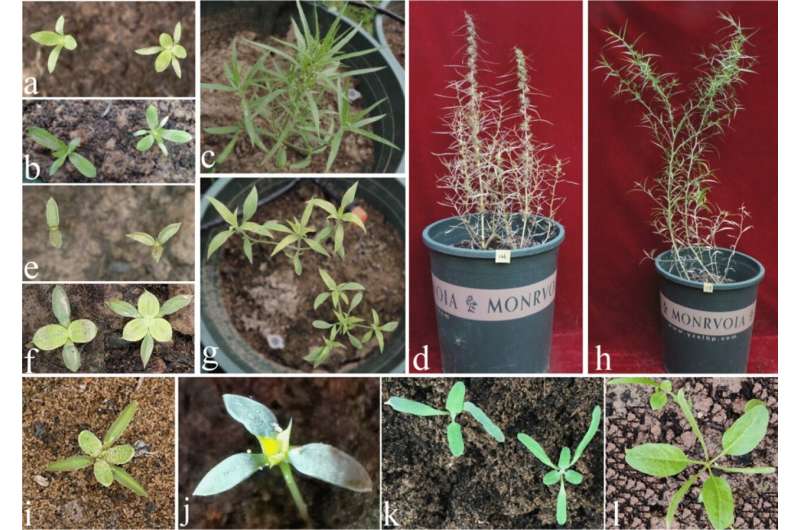This article has been reviewed according to Science X's editorial process and policies. Editors have highlighted the following attributes while ensuring the content's credibility:
fact-checked
trusted source
proofread
Researchers reveal genetic and evolutionary characteristics of tricotyledony in sand rice

Known as a pioneer herb on the moving sand dunes of Central Asia, sand rice has been recommended as a potential future crop due to its excellent drought tolerance and rich nutritional value.
Tricotyledony is an occasional occurrence in dicotyledonous plants, including sand rice, mainly due to genetic variability, artificial selection, and environmental stress, with complex molecular and genetic mechanisms involved.
Recently, a research team led by Prof. Zhao Pengshan from the Northwest Institute of Eco-Environment and Resources of the Chinese Academy of Sciences (CAS) identified the tricotyledony occurrence from natural populations of sand rice and isolated the mutant seedlings with more than two cotyledons from the chemical mutagenesis library, to assess the evolutionary significance and genetic basis of the cotyledon number in dicotyledon species.
This study was published in Genetic Resources and Crop Evolution on Aug. 29.
The researchers found that spontaneous tricotyledonony occurred in different sand rice accessions, with occurrence rate ranging from 0.83% to 14.29%.
The tricotyledonous seed quality of sand rice varied in different regions. Tricotyledonous plants at Duolunbei showed defects in seed development, while tricotyledonous plants at Shigatse showed significant increases in seed weight, suggesting that tricotyledonous plants are associated with growth phenotypic variation in different accessions.
This result suggested that cotyledon number change could produce some correlated variation in adult phenotypes, which in turn affect the fitness of the sand rice to the external environment.
In addition, the study implies that extreme environments and/or internal genetic variation are a pervasive conserved/converged state that influences the emergence of tricotyledonous leaves in dicotyledonous plants.
More information: Ruilan Ran et al, Tricotyledony in sand rice (Agriophyllum squarrosum), Genetic Resources and Crop Evolution (2023). DOI: 10.1007/s10722-023-01712-7
Provided by Chinese Academy of Sciences





















